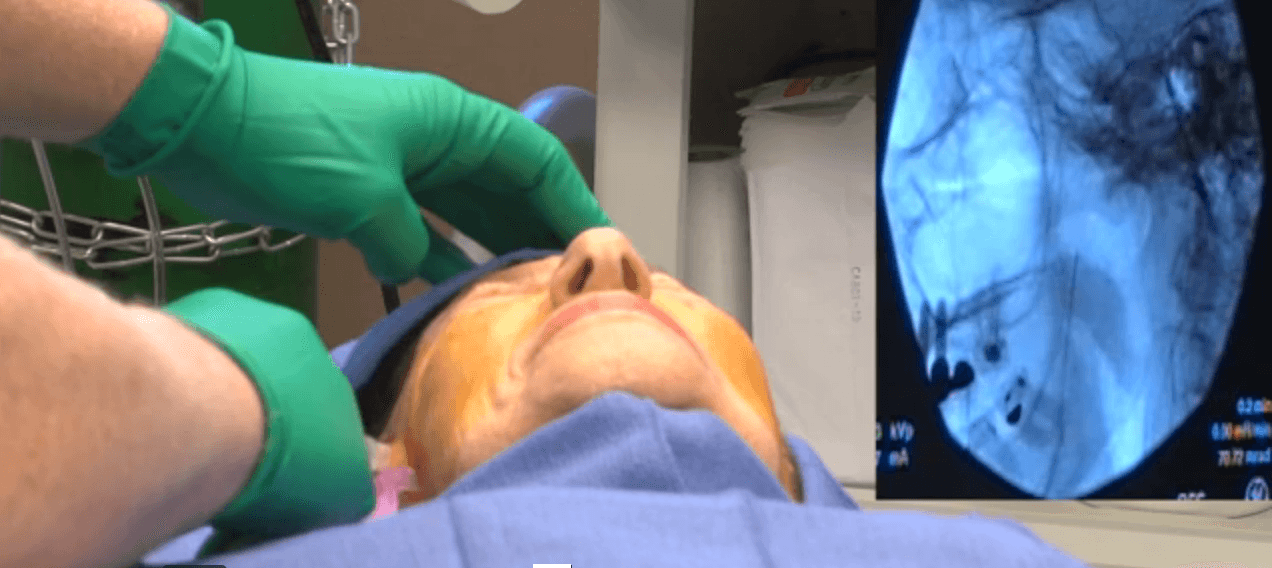درد صورت در اثر عوامل مختلفی ایجاد می شود. پزشک می تواند این مشکل را با معاینه و بررسی شرح حال بیمار تشخیص دهد. خوشبختانه علت اغلب دردهای صورت خطرناک نیست؛ اما برخی از عواملی که باعث این مشکل می شوند نیاز به درمان فوری دارند؛ مانند آرتریت تمپورال (بیماری شایع در زنان بالای پنجاه سال که اغلب شریان تمپورال را درگیر می کند). بنابراین تشخیص عامل ایجاد درد صورت ضروری است. در مواقعی که عفونت ویروسی دستگاه تنفس فوقانی وجود داشته باشد، تشخیص امکان سینوزیت باکتریایی اهمیت دارد.
- درد صورت از یک یا چند شاخه عصب سه قلو که حامل پیام های حسی از صورت به مغز هستند ایجاد می شود.
- درد اغلب در عصب فک بالا که در امتداد استخوان گونه، بینی، لب و دندان های بالا قرار دارد احساس می شود. محل دیگر ایجاد درد عصب فک پایین است که پایین گونه، لب پایین و فک را تحت تأثیر قرار می دهد.
- در اغلب موارد درد صورت به یک سمت آن محدود می شود.
بلوک عصب گانگلیون گاسرین با رادیوفرکانس


برای درمان دردهای مزمن صورت و نیز سر درد می توان از رادیوفرکانس استفاده کرد. بلوک عصب سه شاخه گانگلیون گاسرین با رادیوفرکانس روشی با حداقل تهاجم است که درد صورت و سر درد را بهبود می بخشد. این روش نیازمند تجهیزات پیشرفته و مهارت فنی جهت انجام این کار است؛ در حال حاضر تعداد محدودی از پزشکان و متخصصان مهارت لازم برای انجام این تکنیک را کسب کرده اند. با این روش می توان طیف وسیعی از مشکلات را درمان کرد:
- نورالژی عصب سه قلو
- نورالژی اسفنوپالاتین
- سر درد میگرن
- سر درد خوشه ای
- درد آتیپیک صورت
- درد سرطانی سر و گردن
- درد زبان و دهان
- درد مفصل گیجگاهی فکی
آمادگی برای انجام تکنیک رادیوفرکانسی
- درمان به صورت سرپایی انجام می شود و نیاز به آمادگی خاصی از جمله پوشش خاصی ندارد.
- از غذا خوردن قبل از آغاز کار خودداری کنید.
- اگر از داروی خاصی استفاده می کنید قبل از آغاز کار آن را مصرف کنید (این شامل داروهای رقیق کننده خون نمی شود؛ در مورد این داروها با پزشکی که مصرف آن را تجویز کرده است مشورت نمایید).
- از یکی از آشنایان خود بخواهید شما را تا منزل همراهی کند.
- تا 24 ساعت بعد از درمان رانندگی نکنید.
درد بیمار چه مدتی بعد از درمان بهبود پیدا می کند؟
درد ممکن است تا مدتی بعد از درمان ادامه داشته باشد. این زمان ممکن است چند هفته طول بکشد، اما در نهایت درد از بین می رود. نتیجه مطلوب بین شش تا هشت هفته بعد از درمان حاصل می شوند. در این زمان یک بار دیگر برای پیگیری درمان نزد متخصص درد بروید.
این روش عوارضی برای بیمار ایجاد می کند؟
از آنجایی که رادیوفرکانسی روشی با حداقل تهاجم است عوارض بسیار نادری دارد؛ اما در موارد انگشت شماری ممکن است مشکلات زیر ایجاد شوند:
- امکان دارد برخی از رگ های خونی کوچک آسیب ببینند و در داخل گونه خونریزی شود.
- احتمال انتقال باکتری از غشای مخاطی به داخل مایع مغزی و ایجاد مننژیت وجود دارد.
- اگر بیمار تا شش ساعت بعد از درمان، تب بالای 38.5 درجه همراه با سر درد و سفتی گردن داشته باشد برای تجویز آنتی بیوتیک باید با پزشک تماس بگیرد.
- در صورت تکرار این درمان ممکن است بخشی از صورت شخص بی حس شود.
منابع
http://www.ainsworthinstitute.com/
http://www.pijn.com//
http://www.emedicinehealth.com/
http://www.patient.co.uk/










